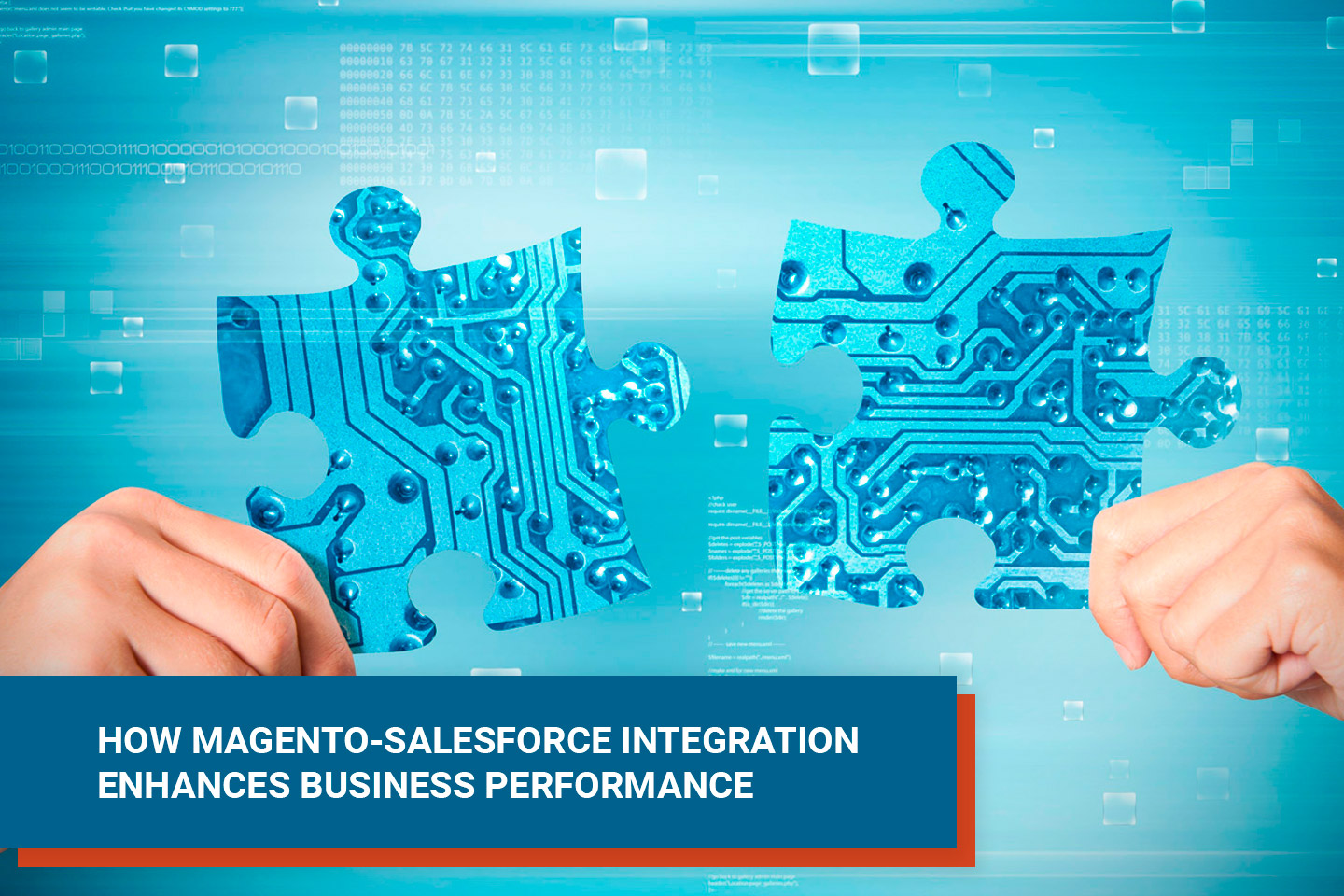Magento Marketplace is Removing M1 Plugins: What’s Next?
 Igor Krasnykh
·
6 minute read
Igor Krasnykh
·
6 minute read

This article is for you if:
- You’re a Magento developer with active M1 extensions in the Magento Marketplace.
- You’re a system integrator that works with M1 extensions in the Magento Marketplace
- You’re a Magento 1 merchant that uses Marketplace extensions to meet your business needs
- You’re a developer, system integrator or merchant that is curious about how the removal of M1 Marketplace extensions will affect you
- You are looking for expert guidance on how to move forward after M1 extensions are deleted from the Magento Marketplace
Our business largely depends on Magento, so I make a point of staying in the loop on company and product announcements. The following came in a recent email from Adobe: “We are reaching out to remind you that Magento 1 is reaching end-of-life on June 30, 2020 and that your M1 extension(s) on Marketplace will be removed from marketplace.magento.com on July 7, 2020.” For almost two years, Magento has been in regular communication with merchants regarding the end-of-life for its Magento 1 e-commerce platform. However, this email was the first indication we had seen that the Marketplace extensions would be completely removed. I was shocked by this news and wonder how many others in the Magento community had the same reaction? This was a surprising move for a number of reasons, but namely, because it cuts into Magento’s own profits (they take a percentage of all purchases made in the Marketplace). Additionally, the negative impacts are far-reaching for developers, system integrators and merchants remaining on Magento 1.
Issues for developers

1. Developers will lose their public Marketplace reviews
As a developer, it takes years to build a collection of customer reviews that help underpin credibility and, as a result, drive sales. Unless you have focused on building customer reviews on a third-party resource, such as Google Reviews, all of the positive feedback you’ve collected for years from customers will be lost.
2. The challenge of being found online
We all know that individual product websites do not rank as high as the Magento Marketplace. Search engine optimization (SEO) takes time for any business to build. It’s a marathon, not a sprint.
I have spent time and money investing in SEO and marketing development (despite being unaware of the Marketplace change for M1 plugins) because it makes sense for PowerSync. I know that many developers are not as prepared, so this change to the Magento Marketplace might come as a rude awakening. Even if they begin a comprehensive SEO and marketing strategy immediately, their businesses will inevitably suffer some revenue loss before seeing the search algorithms turn to their websites.
There is also the issue of broken links. If you link to your Marketplace extensions anywhere online, it will lead to an Error 404 page after the extensions are removed — unless Magento sets up link redirects. Nothing has been mentioned about redirects yet, which is probably making these developers very nervous. Magento may decide to manually change individual links within the Marketplace themselves, but that is a cumbersome task and I doubt they will go to those lengths.
3. Security will require more attention
Security is a major consideration for any online merchant, and it’s something that will require special attention after the Marketplace removal. Previously, Magento offered security support for their M1 platform, but now merchants and developers are on their own. In addition to their normal activities, merchants who are on the Magento 1 platform will now have to run additional security checks and scans. This can easily lead to a domino effect of fixes. Because of internal logic, a repair to one thing means you may have to repair others.
4. Developers are faced with a larger time commitment
Focusing on security, SEO and marketing is going to require more time. Developers will have to find a way to focus on all of their previous responsibilities, plus more.
Issues for system integrators and merchants
1. A loss of trust
When an extension is listed in the Magento Marketplace, there is a certain level of trust and credibility that goes with this. It means that the plugin has been reviewed and accepted by Magento. With the Marketplace listings going away, this sense of security for the buyers is also disappearing. Now, Magento 1 customers are faced with having to do their own online research before they can feel comfortable making a purchase (which, again, is much harder without verified reviews).
2. Increased maintenance costs
The reality is that many Magento 1 merchants are not eager to re-platform for a variety of reasons. They may not have the money to upgrade to Magento 2 or to migrate to another platform. However, upkeep costs are likely to rise as the result of a spike in developer demand. The next 12 months will reveal how many merchants will remain on the M1 platform, but everyone I have spoken to is grappling with the best financial way to move forward.
Where do we go from here? 5 logical next steps for those affected

1. Make a plan that suits all of your business needs
Merchants that are still on the Magento 1 platform should reach out to their plugin developers to make sure there is a plan in place for plugin maintenance going forward. At PowerSync, we’re going to continue to offer support to our customers no matter how long it takes (up until the last person migrates off of the Magento 1 platform).
Now is also an opportune time to re-evaluate your individual business needs. With support for Magento 1 coming to an end, the automatic assumption is often that a merchant should migrate to the next version — Magento 2 — which is touted for its faster speeds and expanded functionality. But is it time for your business to ditch Magento altogether?
Don’t get me wrong — I am a big fan of Magento, and it is the platform I run my own business on. But I also know it may not be the right fit for all merchants. Is there another platform that would better meet your needs? Magento is an especially great option for enterprise-level merchants, businesses with many custom system integrations or businesses with custom needs/demands. Where do you see your business going? While it’s important to keep scalability in mind, this picture looks different for every business.
2. Speak with an e-commerce expert
The recent news about extensions in the Magento Marketplace may have thrown you for a loop, but it’s something you can overcome if you act fast. At PowerSync, the bottom line is that we’re here to serve merchants. We invite you to schedule time on our calendar to speak with an experienced e-commerce expert free of charge. We are passionate about helping businesses and will guide you on individualized recommended next steps.
3. Get your website ready
As we touched on before, developers and system integrators need to figure out other methods of getting their plugins to merchants. Because there is a lack of third-party options at this point in time, you will have to rely on your business website. That’s why it is essential for you to place an urgent focus on SEO and marketing.
4. Decide and adjust
At this time, system integrators are faced with some major decisions. When it comes to support, they must either phase the third-party extension out over time and build something custom, or they must establish a good rapport with a developer to maintain their Magento 1 extension. One option we don’t advise is the path of least resistance; the “if it’s not broke, don’t fix it” approach, deciding to address issues only as they arise. If something goes wrong and the developer no longer offers the needed support, system integrators may have no other option than to fix, adjust and customize the extension themselves. On the merchant side of the equation, you’re faced with determining how you can fulfill your needs, with or without Magento. If you are a merchant that is affected, please know that PowerSync is available to create new solutions to address the effect the M1 extension removal will have on the market. Schedule time on our calendar for a risk-free discussion. Our flagship product is a Magento-Salesforce integration. Anticipating the challenges that would arise from the Magento 1 end-of-life, we went outside of the box to accommodate an existing client’s transition to Shopify. The custom Shopify-Salesforce integration that we created for them served as a framework for our latest product rollout, which we will expand and maintain just as meticulously as the original.
5. Send Magento an email
Should Magento take action to ease this burden? I certainly have some opinions, and you probably do, too. At the very least, I think it would be appropriate for Magento to create permanent 301 link redirects, preventing broken links for M1 Marketplace extensions living anywhere on the web. While this would be a time-consuming task for Magento, it’s the right thing to do. If you feel the same way, or if you have other feedback, you can contact them to express your thoughts.
Important lessons we must take away from this experience

One of the biggest lessons to take away from the Marketplace announcement is to plan ahead for similar situations in the future. Don’t put all your eggs in one basket by over-relying on the Marketplace. What happens when Magento 3 rolls out?
You must also make it a priority to establish a long-term SEO and marketing strategy. This includes placing a focus on building responsive pages, backlinks and regular site updates. Also, start now with building your own catalog of customer reviews. Encourage your customers to leave positive feedback on third-party review websites.
The bottom line
Now is the time for merchants, developers and system integrators to proactively face the challenges stemming from the removal of Magento 1 Marketplace extensions. It’s time to identify the gaps that will be presented in your business and prepare. Placing a renewed focus on website SEO and marketing is one of the most impactful things you can do at this stage. Another is determining which e-commerce platform will be best for your business going forward and taking the steps to get there. Before you can move forward, the most important question you must ask yourself is this: Am I comfortable with the risks that come with the plugin removal? We recommend ditching band-aid solutions for good, and we would be happy to help anyone who needs some complimentary advice.



